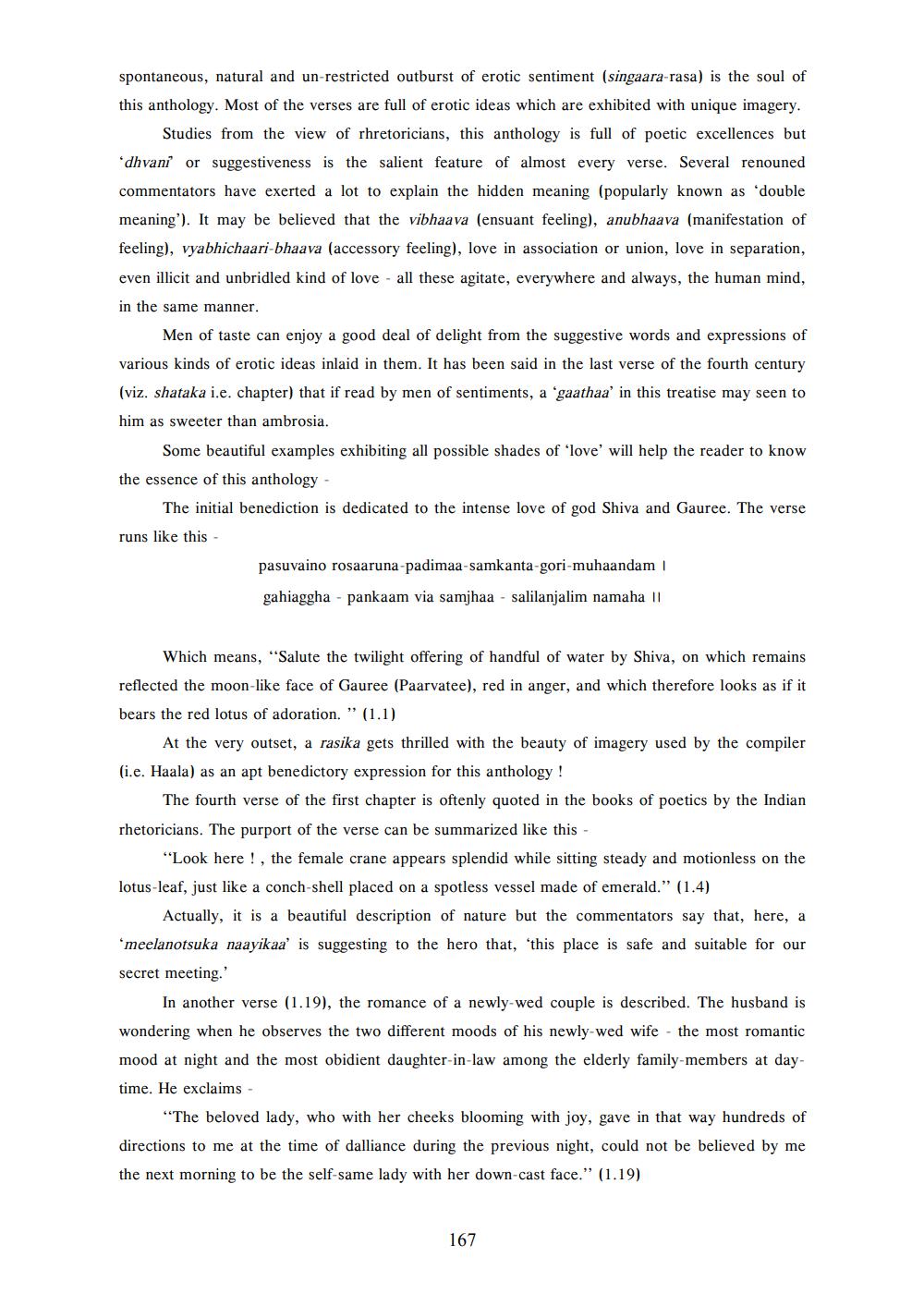________________
spontaneous, natural and un-restricted outburst of erotic sentiment (singaara-rasa) is the soul of this anthology. Most of the verses are full of erotic ideas which are exhibited with unique imagery.
Studies from the view of rhretoricians, this anthology is full of poetic excellences but dhvani or suggestiveness is the salient feature of almost every verse. Several renouned commentators have exerted a lot to explain the hidden meaning (popularly known as 'double meaning'). It may be believed that the vibhaava (ensuant feeling), anubhaava (manifestation of feeling), vyabhichaari-bhaava (accessory feeling), love in association or union, love in separation, even illicit and unbridled kind of love - all these agitate, everywhere and always, the human mind, in the same manner.
Men of taste can enjoy a good deal of delight from the suggestive words and expressions of various kinds of erotic ideas inlaid in them. It has been said in the last verse of the fourth century (viz. shataka i.e. chapter) that if read by men of sentiments, a 'gaathaa' in this treatise may seen to him as sweeter than ambrosia.
Some beautiful examples exhibiting all possible shades of 'love' will help the reader to know the essence of this anthology -
The initial benediction is dedicated to the intense love of god Shiva and Gauree. The verse runs like this
pasuvaino rosaaruna-padimaa-samkanta-gori-muhaandam
gahiaggha - pankaam via samjhaa - salilanjalim namaha 11
Which means, "Salute the twilight offering of handful of water by Shiva, on which remains reflected the moon-like face of Gauree (Paarvatee), red in anger, and which therefore looks as if it bears the red lotus of adoration." (1.1)
At the very outset, a rasika gets thrilled with the beauty of imagery used by the compiler (i.e. Haala) as an apt benedictory expression for this anthology!
The fourth verse of the first chapter is oftenly quoted in the books of poetics by the Indian rhetoricians. The purport of the verse can be summarized like this -
"Look here !, the female crane appears splendid while sitting steady and motionless on the lotus-leaf, just like a conch-shell placed on a spotless vessel made of emerald." (1.4)
Actually, it is a beautiful description of nature but the commentators say that, here, a *meelanotsuka naayikaa' is suggesting to the hero that, 'this place is safe and suitable for our secret meeting.
In another verse (1.19), the romance of a newly wed couple is described. The husband is wondering when he observes the two different moods of his newly-wed wife - the most romantic mood at night and the most obidient daughter-in-law among the elderly family members at daytime. He exclaims -
**The beloved lady, who with her cheeks blooming with joy, gave in that way hundreds of directions to me at the time of dalliance during the previous night, could not be believed by me the next morning to be the self-same lady with her down-cast face." (1.19)
167




